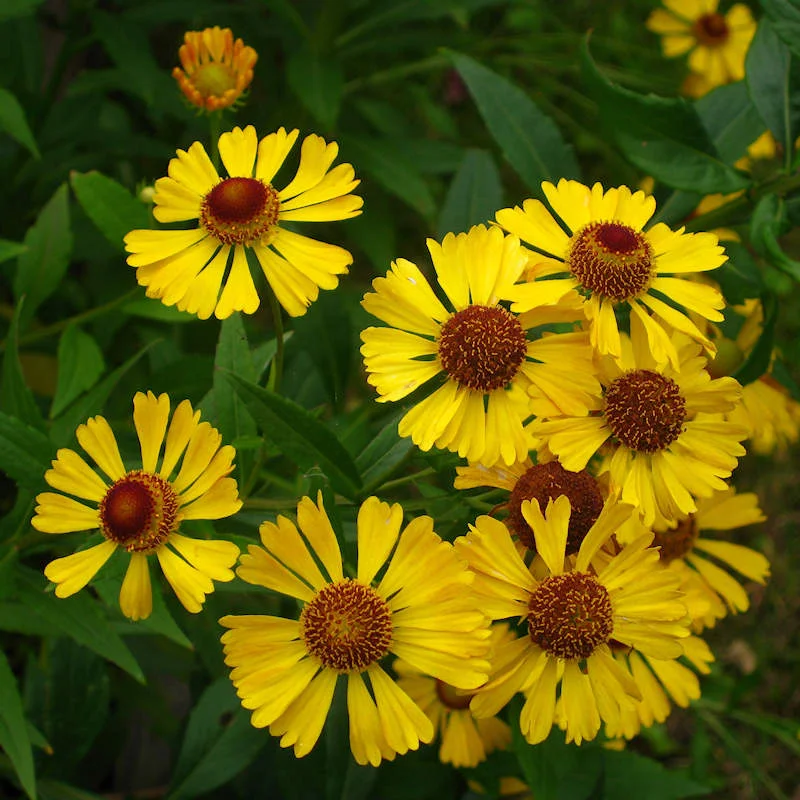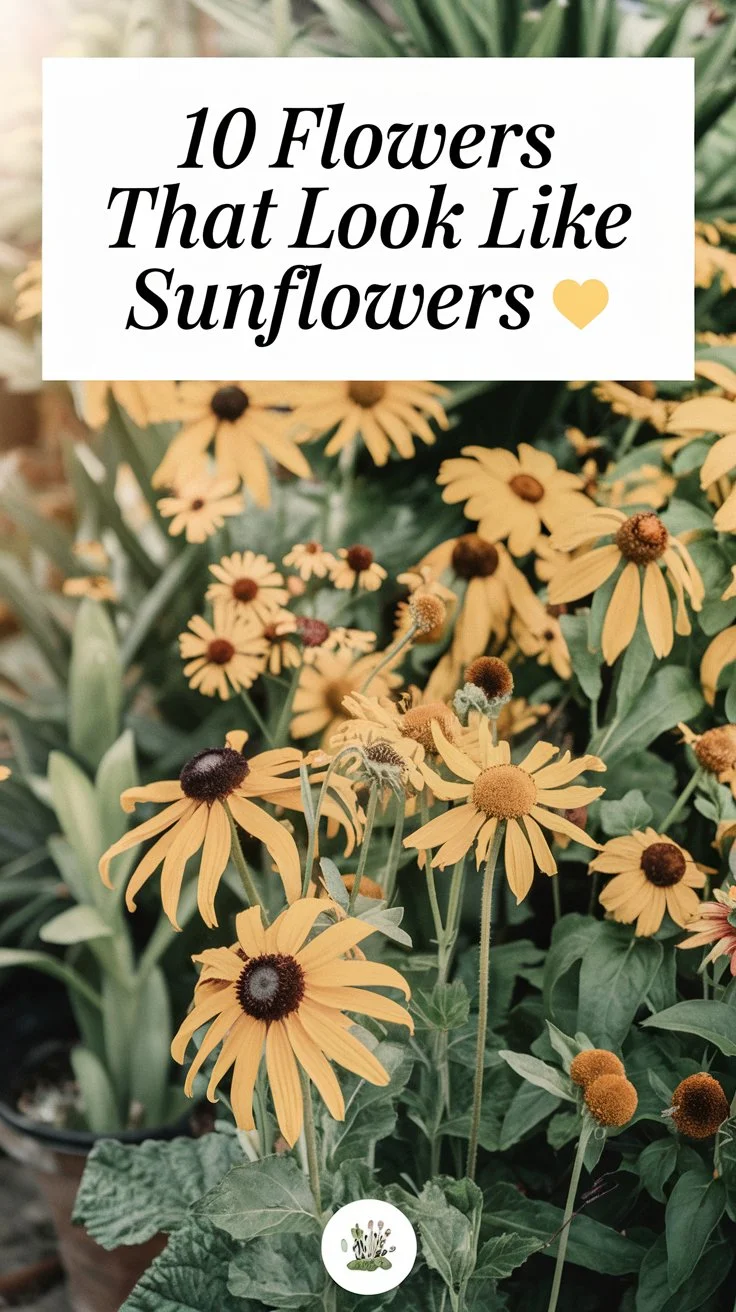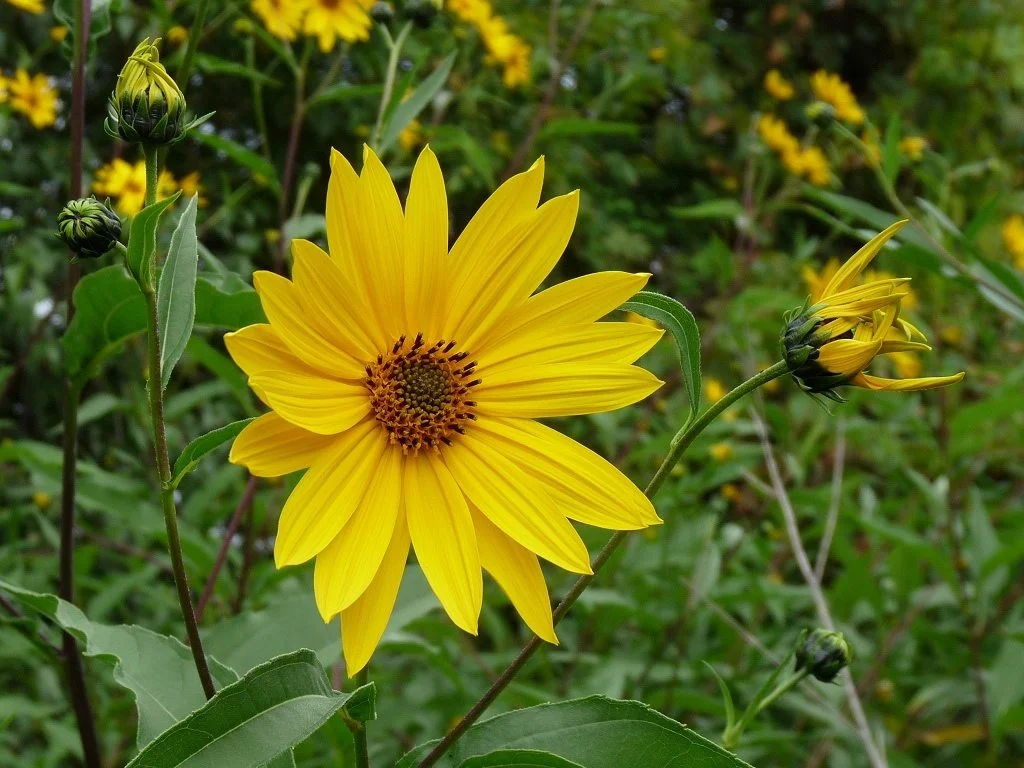Discover 10 stunning flowers that mimic sunflowers’ charm! From compact perennials to wild varieties, learn how to grow these sunny alternatives in your garden.

Hi, I’m Anna Scott, a gardener with over 10 years of experience transforming backyards into vibrant ecosystems. If you love sunflowers but need smaller, hardier, or more colorful alternatives, you’re in the right place! Today, I’ll share my favorite sunflower look-alikes—perfect for compact spaces, wild gardens, or adding a pop of color without the towering height.
Why Choose Sunflower Look-Alikes?
Sunflowers are iconic, but their height (up to 12 feet!) and tendency to droop in wind or shade aren’t ideal for every garden. I’ve learned that smaller, sunflower-inspired blooms can offer the same joy while thriving in diverse conditions. Whether you’re designing a pollinator garden, a cottage-style border, or a container setup, these alternatives deliver beauty without the hassle.
1. Black-eyed Susan (Rudbeckia hirta)

USDA Zones: 3–9 | Height: 2–3 feet | Bloom Time: Summer to Fall
Black-Eyed Susans are the ultimate sunflower twins, with golden-yellow petals and dark brown centers. I’ve used them in my garden to attract butterflies and goldfinches. They’re drought-tolerant and thrive in full sun, making them perfect for wildflower meadows or borders. For a deeper dive, check out my guide on growing Black-Eyed Susans .
Pro Tip: Pair them with ornamental grasses for a prairie-inspired look
2. False Sunflower (Heliopsis helianthoides)

USDA Zones: 3–9 | Height: 3–6 feet | Bloom Time: Mid-Summer to Fall
Don’t let the name fool you—False Sunflowers are just as radiant! These perennials feature bright yellow petals around a golden center. I love their long blooming season and resilience in poor soil. They’re ideal for cut flower arrangements and thrive in full sun.
3. Golden tickseed (Coreopsis spp)
USDA Zones: 3–12 | Height: 1–2 feet | Bloom Time: Early Summer to Late Summer
Coreopsis is my go-to for drought-resistant gardens. Their daisy-like blooms come in yellow, red, and bicolors. I’ve planted them along walkways for a cheerful edge. They’re low-maintenance and attract bees—win-win!
4. Golden Marguerite (Anthemis tinctoria)

USDA Zones: 3–8 | Height: 1–2 feet | Bloom Time: Late Spring–Summer
This compact perennial dazzles with golden-yellow flowers and aromatic foliage. It’s a cut-flower favorite and thrives in poor soil. Plant it along walkways for a low-maintenance, sunny edge 1.
5. Yellow Coneflower (Echinacea paradoxa)
USDA Zones: 3–9 | Height: 2–3 feet | Bloom Time: Early Summer
This rare native coneflower mimics sunflowers with drooping yellow petals. I’ve paired it with purple coneflowers for contrast. It’s drought-tolerant and thrives in rocky soil—ideal for wild gardens .
6. Compass Plant (Silphium laciniatum)
USDA Zones: 3–9 | Height: 6–12 feet | Bloom Time: Mid-Summer–Fall
A prairie giant, Compass Plant’s lobed leaves align north-south like a compass needle. Its sunflower-like blooms attract bees, and its seeds feed birds. Bonus: Deep taproots make it drought-resistant—ideal for eco-friendly landscapes .
7. Autumn Sneezeweed (Helenium autumnale)

USDA Zones: 2–10 | Height: 3–5 feet | Bloom Time: Late Summer–Fall
Don’t let the name deter you! Autumn Sneezeweed’s golden-yellow flowers resemble sunflowers and thrive in wet soil. Historically, its dried leaves were used in snuff, but today it’s a pollinator magnet. Perfect for rain gardens or damp borders .
8. Cup Plant (Silphium perfoliatum)
USDA Zones: 3–9 | Height: 4–8 feet | Bloom Time: July–September
This towering native perennial mimics sunflowers with its yellow blooms and attracts pollinators like bees and birds. Its leaves form natural “cups” that collect rainwater, providing hydration for wildlife. Note: It’s vigorous—plant in wildflower meadows or large spaces to avoid overcrowding .
9. African Daisy (Gazania)

USDA Zones: 9–11 | Height: 8–12 inches | Bloom Time: Spring to Fall
African Daisies dazzle with vibrant yellow, orange, or red petals surrounding a dark center. These drought-tolerant blooms close at night and thrive in poor soil, making them ideal for rock gardens or containers. Fun fact: Their “treasure flower” nickname comes from their jewel-like colors .
Pro Tip: Pair them with lantana in pots for a fiery display that butterflies adore!
10. Jerusalem Artichoke (Helianthus tuberosus)
USDA Zones: 3–9 | Height: 6–10 feet | Bloom Time: Late Summer to Fall
A dual-purpose plant, Jerusalem Artichoke offers edible tubers and sunflower-like blooms. I’ve used them as a privacy screen in my garden. They’re hardy but can spread aggressively, so plant them in contained beds .
Comparison Chart
| Plant | Height | Key Feature |
|---|---|---|
| African Daisy | 8–12″ | Drought-tolerant; closes at night |
| Cup Plant | 4–8 ft | Rainwater-collecting leaves |
| Autumn Sneezeweed | 3–5 ft | Thrives in wet soil |
| Compass Plant | 6–12 ft | Leaves align like a compass |
| Golden Marguerite | 1–2 ft | Fragrant; perfect for bouquets |
Why These Additions Matter
- Biodiversity Boost: Cup Plants and Compass Plants support birds and pollinators with their seeds and water reserves 1012.
- Adaptability: African Daisies and Golden Marguerite thrive in poor soil, ideal for challenging gardens 91.
- Seasonal Interest: Autumn Sneezeweed extends your garden’s color into fall 7.
Need More Ideas? Explore my guides on drought-resistant flowers or pollinator gardens for tailored inspiration!
About Anna Scott: Founder of USA Garden Hub, I blend sustainable practices with creative design. My work has been featured in Gardener’s World and The Spruce. Let’s grow together—connect with me on Instagram for daily tips!










One comment on “10 Flowers That Look Like Sunflowers: Bring Sunshine to Your Garden”